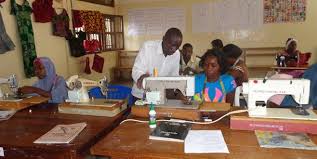By YPO Forum
Davina Kobrin
Can you relate to the frustration of ‘spinning your wheels’ searching for a new solution to an old problem? The more you think, the more stuck you get circling the same old stuff?
We are creatures of habit. Literally. The brain is a learning organ that filters out unnecessary information and creates automatic responses in the form of patterns and maps (neural pathways). Well-established neural pathways mean we don’t have to think – our body simply responds. How efficient! Imagine having to think every time you walk, wash your hands or drive a car?
Simply put, more than 90 percent of experiences and information that the brain has deemed not relevant for conscious attention is stored in implicit memory. The information that is quickly accessible in explicit memory is narrowed to focus on useful but limited information necessary for daily life.
The Prefrontal Cortex (PFC) is responsible for planning, predicting, learning new activities and thinking through possible outcomes amongst other things. It is however weak and fatigues easily.
With the grossly inadequate horsepower of the PFC and the underwhelming storage capacity of explicit memory, we do not often arrive at new perspectives by thinking longer and harder.
So how do we crack open the treasure trove of valuable experience stored in implicit memory?
• By giving the PFC a rest;
• By overriding some of our natural human tendencies of filtering, judging and perceiving. (This is harder than you might think. Our brains are not wired that way. It takes practice until new neural pathways form.)
• By being creative, this allows the brain to search in different compartments. Our memories need the right ‘cue’ to retrieve the information we need. Once identified, we can easily connect the dots to create an innovative solution. Or experience what is known as the ‘aha moment’.
Here are 7 useful practices to get you started:
1. Create safety: Suspend judgment. Give yourself (and others) permission to get it wrong. Let things be messy. Create lots of room to play, experiment and discover.
2. Be a beginner: The ‘expert’ can be a threat to creativity and problem solving. Be curious. Be amazed. Be open-minded. There is endless capacity for learning in ordinary life.
3. Be clear about your desired outcome: What is the end goal? Clarify the question – make it simple. Then let go completely of the need to know the answer for now. It will come.
4. Forget hierarchy: The solution may come from someone else. In an environment where everything is an opportunity – your two year old or the new intern could be the key.
5. Play free association games: Tell a story. Each person builds the story line picking up where the last left off. Or sing one line of a song. The next person, sing a new song that contains the same word. For example: “Fly me to the moon”. “Blue Moon”. “Put on my blue suede shoes.”
6. Use nature: Go for a walk. Be present. Watch as the ant carries a twig, notice the clouds change shape and colour, what bird perched itself on that branch? Keep a list of all the ‘signs’ you saw. Turn them into metaphors. For example. The ant’s stubborn tenacity, the clouds’ impermanent nature or a bird’s eye view. How could each metaphor impact your issue?
7. Dictionary Game: Open the dictionary to any page. Pick a word and link it into a new sentence solving your issue. It does not need to be viable. Infact it is better if it isn’t rational!
Now, and only now, look at your issue again and see what has changed. Anything new?
Of course, none of these practices are magical potions on their own. But, aside from developing stronger problem solving brain plasticity, what they will do is help foster an environment where there is constant learning, curiosity and contribution. As well as a powerful respect for life, each other and all things.
Davina Kobrin is a certified YPO forum facilitator, executive coach and leadership development consultant. Her work is to facilitate transformation: to support in the development of agile, collaborative and innovative environments by helping people to understand how they think, communicate and behave. Kobrin has a rich and varied base of experience to draw from which allows her to design unique sessions.



